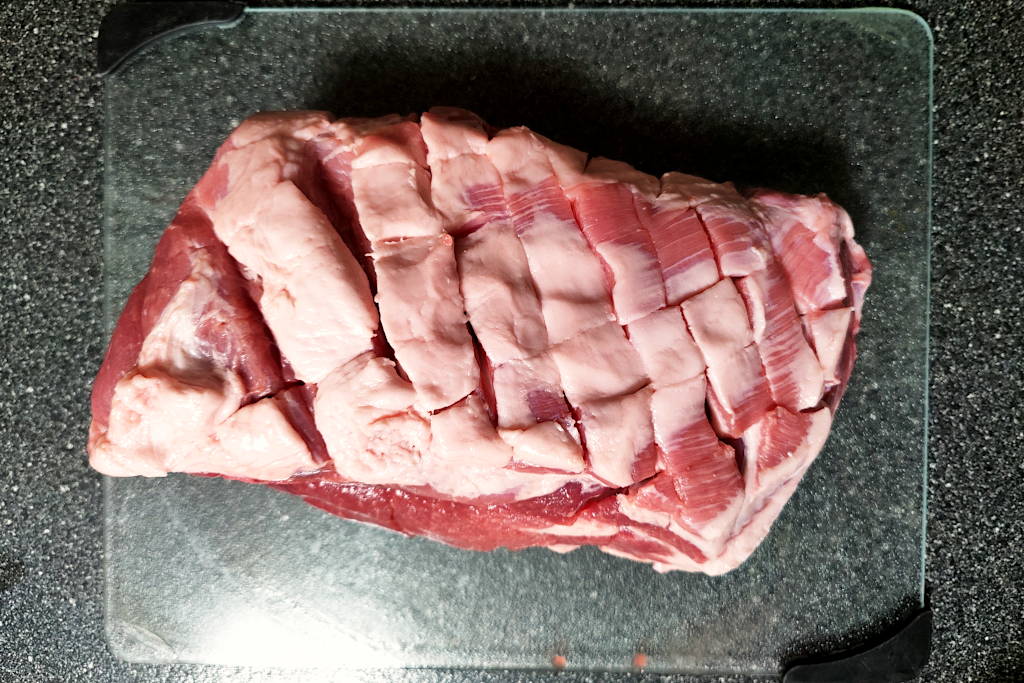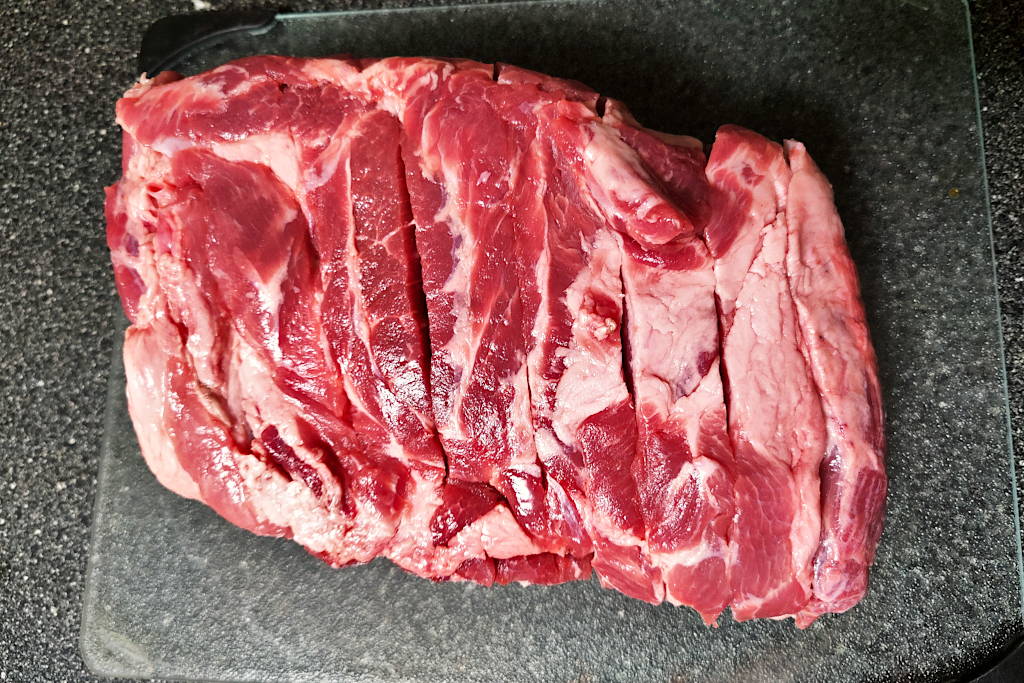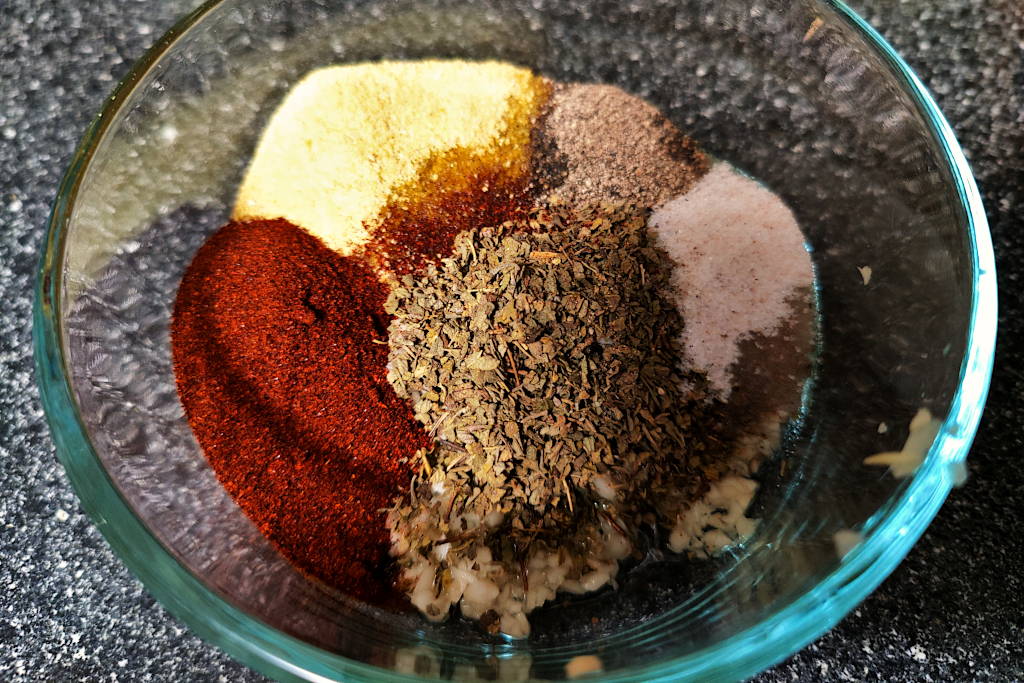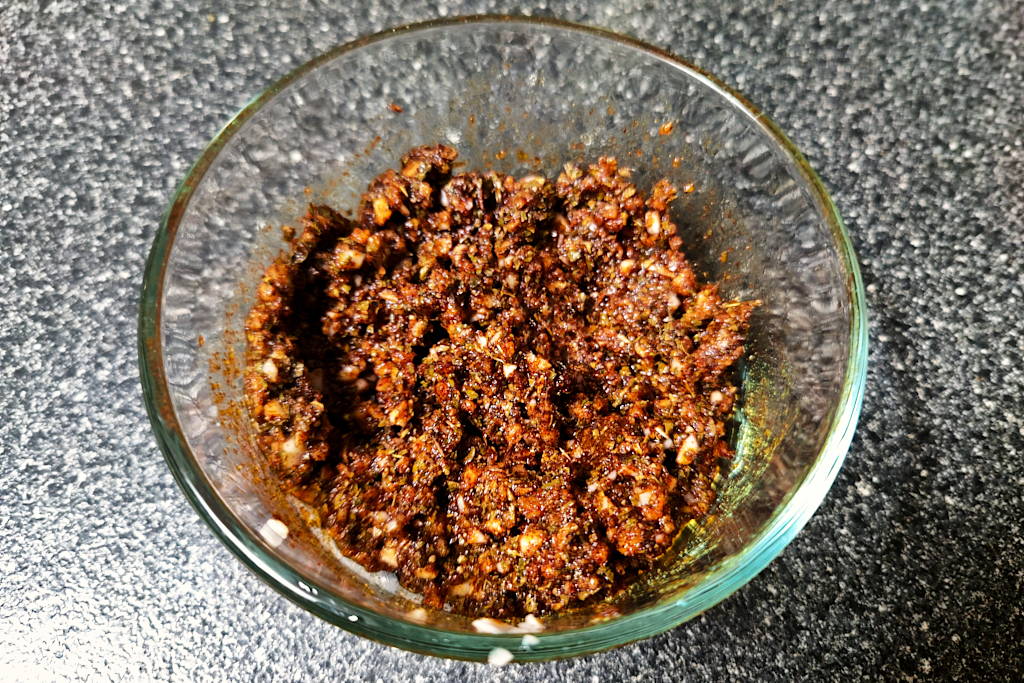Delicious Puerto Rican Pork Shoulder Roast
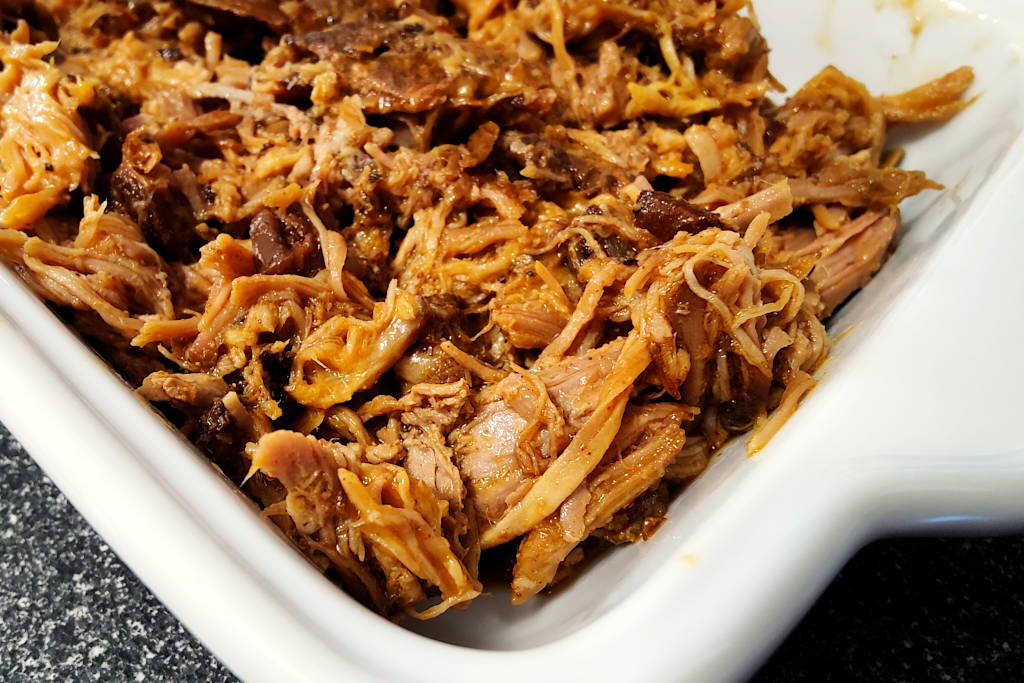
This Puerto Rican pork shoulder roast, also known as Pernil, is a favorite in my house. My husband’s father is Puerto Rican, and so when we got married I wanted to find delicious, Puerto Rican recipes that I could make for him.
I’ve made this recipe countless times, and it never fails to delight. We love it served atop of arroz con gandules, Spanish hamburger rice, or rice with pigeon peas. It is also fantastic in a tortilla, or even on mashed potatoes! It’s incredibly versatile, and so delicious!
Now, it is important to note that this is my variation of this dish. I have tried my best to stay true to Pernil, but I’m not Puerto Rican myself, nor have I been to Puerto Rico to know for sure how this dish is cooked and served. I’ve tried to do my research, but bear with me if some of my ingredients or steps are different from the authentic Pernil. By all means, if you are familiar with this dish, let me know in the comments below how your family prepares it!
Equipment & Tools
Knife: Using a knife to score the meat helps the marinade to soak deeper into the meat during the overnight marinating.
Small Bowl
Baking Dish: You will need a 9×13 size baking dish.
Aluminum Foil: Baking the meat covered for part of the time helps to contain the juices within the dish.
Forks: Two forks work wonderfully for shredding the pork when it is out of the oven, but you can use tongs or whatever else you may have on hand.
Ingredients Needed
Pork Shoulder: Pork shoulder is an amazing cut of meat. When cooked low and slow (like this recipe calls for), the fat in the meat melts, and the meat itself just falls apart. It’s incredibly easy to shred, and the flavor is truly amazing.
Vegetable Oil: The oil is used to create the marinade for the meat, helping the spices to stick and permeate overnight.
Spices: There are many spices used in this recipe, and all of them help bring wonderful flavor to the meat. They’re used in the marinade, so the pork has all night to let the spices soak in. The spices used in this recipe are:
- Garlic
- Oregano
- Adobo
- Smoked Paprika
- Salt
- Pepper
Citrus: Lemon juice and orange juice help to bring a bright note of acidity to the meat after it is finished cooking, helping to cut through the fatty richness of the pork. To those unfamiliar with using citrus in meat, it may seem strange, but bear with me because these are absolutely essential.
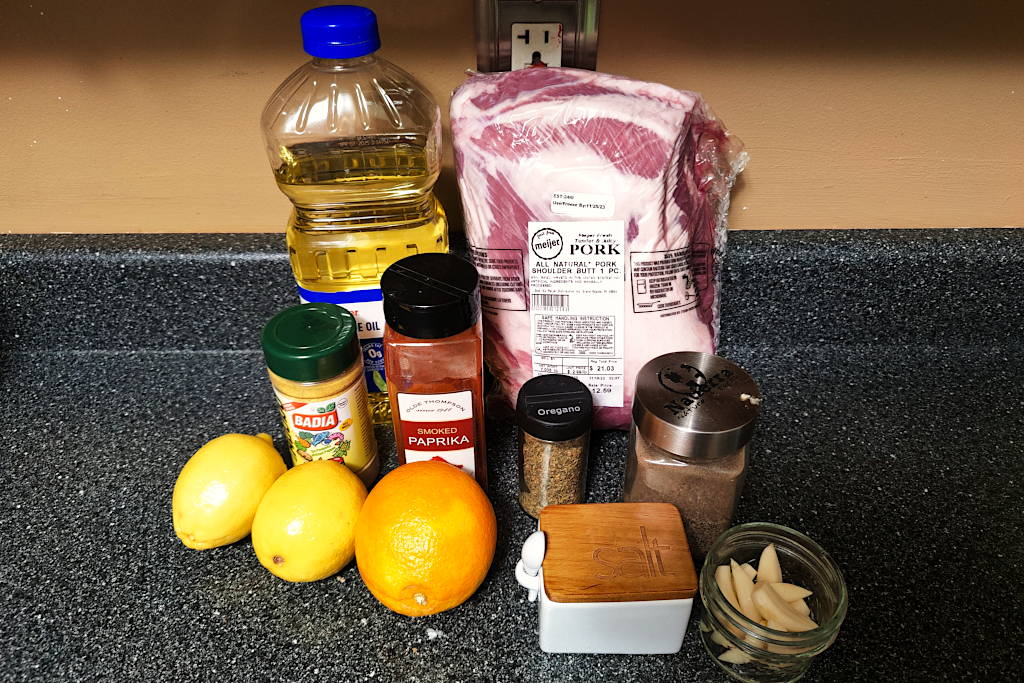
How to Make Puerto Rican Pork Shoulder Roast
Prep the Meat: Using a sharp knife, score the fat on the pork shoulder using a crisscross pattern. Then, take your knife and make a dozen to two dozen slits into the meat, about 1-inch deep. This helps the marinade to soak into the meat. Place the meat in a 9×13 inch baking dish.
Prepare the Marinade: In a small bowl, mix together the oil, garlic, oregano, Adobo, paprika, salt, and pepper. Rub this mixture all over the meat, being sure to rub it deep into the crisscross cuts, as well as into all of the slits you made in the meat.
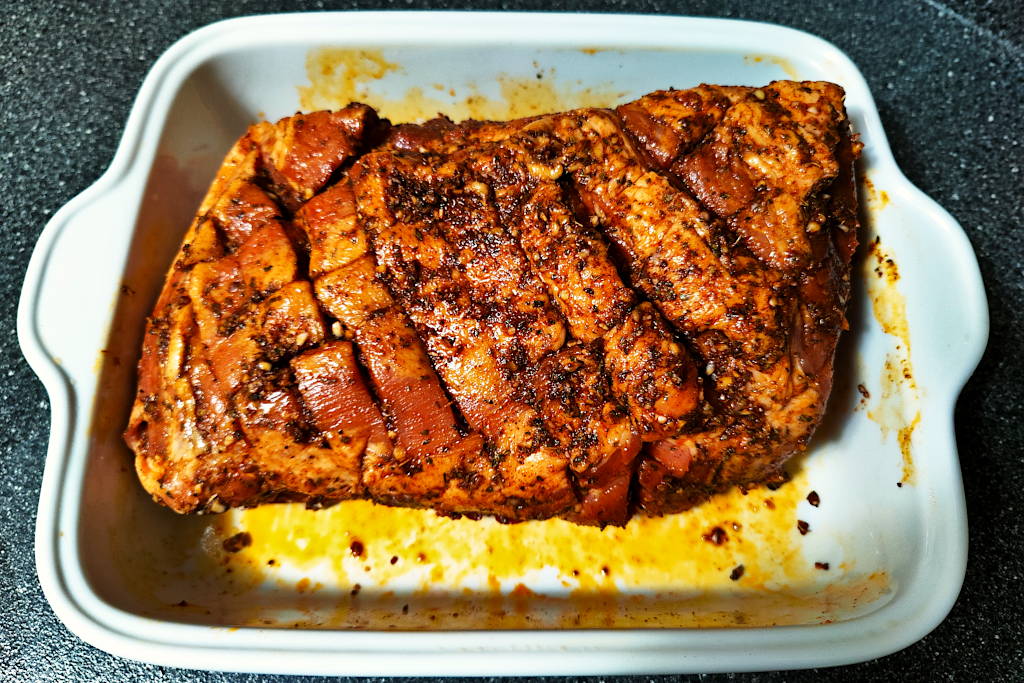
Let it Marinate: Cover the dish with foil and let it marinate in the fridge overnight. You want to give as much time as possible for those spices to flavor the meat, so the longer you let it marinate, the better! However, be sure to not let it marinate for longer than 24 hours, as at that point the meat can start to break down and go mushy.
Let Pork Warm Up: About an hour before you are going to cook the meat, bring the pork out from the fridge. Let it sit on the counter to come to room temperature.
Preheat Oven: Meanwhile, preheat your oven to 300 degrees Fahrenheit / 150 degrees Celsius.
Bake: When the oven is preheated and the pork is at room temperature, bake it in the oven, covered with foil, for 3 hours.
Remove Foil: Remove the foil, and continue cooking for an additional 4 hours.
Let Rest: Pull the pork from the oven, and let cool for 20-30 minutes.
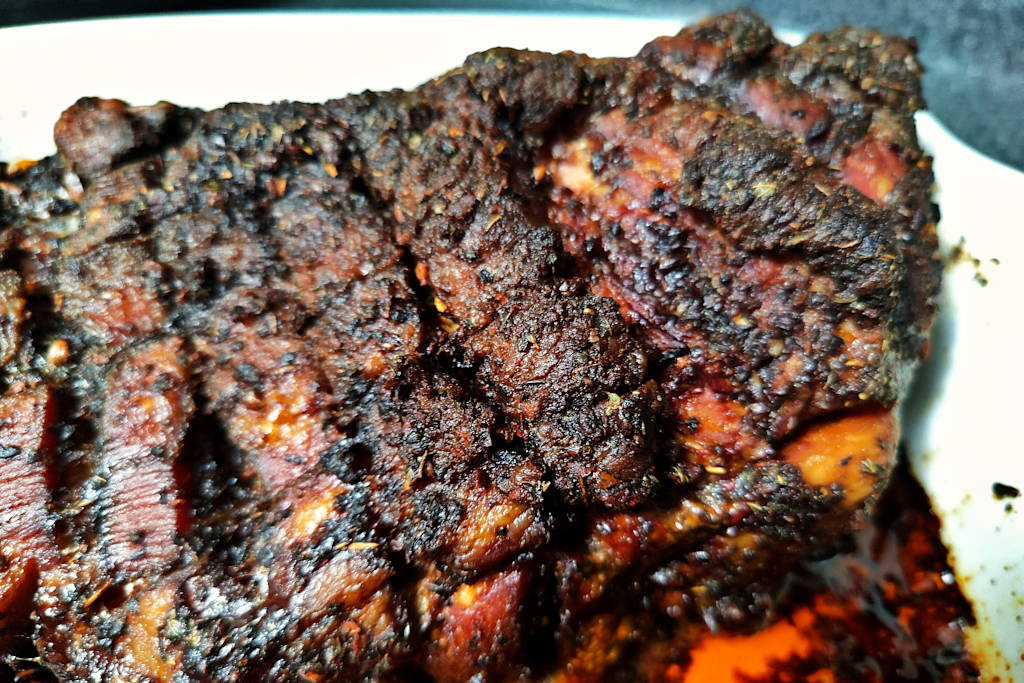
Shred: Using two forks, shred the meat. It should shred very easily!
Add the Juice: Pour the orange and lemon juice over the pork, tossing the meat gently to combine. Season with additional salt and pepper, if desired, and serve!
Storage: Store in an airtight container up to 5 days or freeze for up to 3 months for longer term storage.
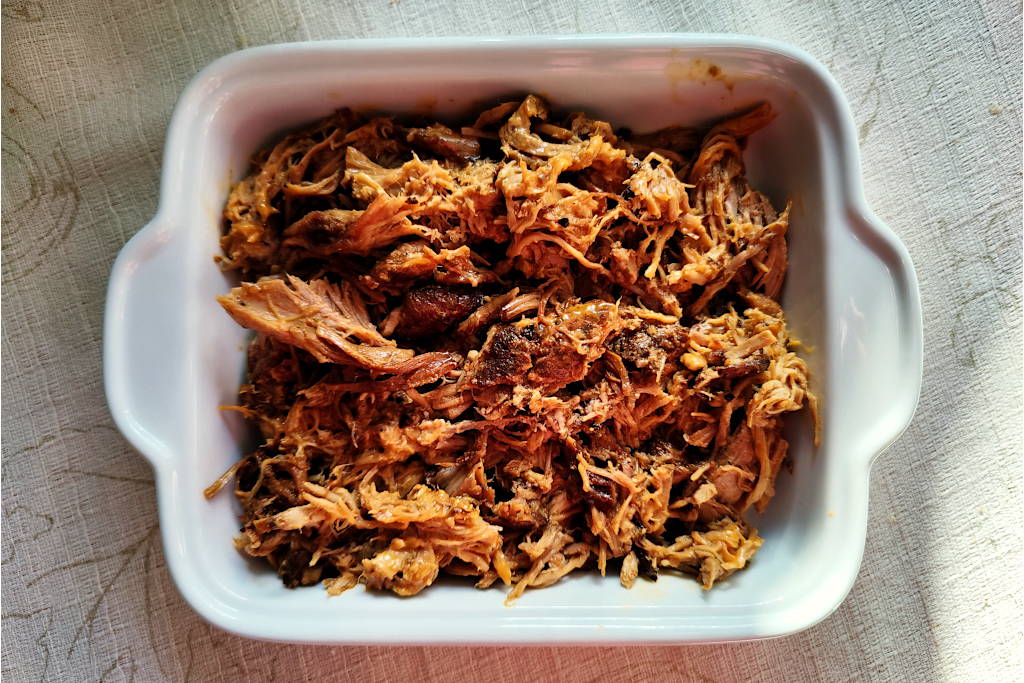
FAQ’s
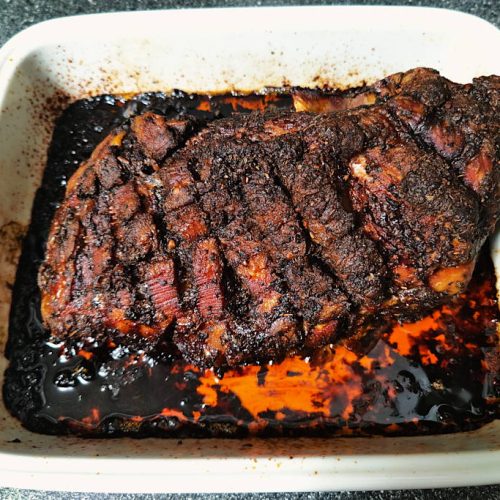
Delicious Puerto Rican Pork Shoulder Roast
*Note: Calories and cost is estimated, if provided.
Equipment & Tools
- 9×13-inch Baking Dish
- Knife
- Bowl
- Aluminum Foil
- 2 Forks
Ingredients
- 7 lbs Pork shoulder butt
- ¼ cup Oil, vegetable
- 12 cloves Garlic , minced
- 2 Tbsp Dried oregano
- 2 Tbsp Powdered adobo
- 1 Tbsp Paprika, smoked
- 1 tsp Fine sea salt
- ½ tsp Ground black pepper , freshly ground
- ½ cup Lemon juice , freshly squeezed (about 2 lemons)
- ½ cup Orange juice , freshly squeezed (about 1 orange)
Instructions
- Using a sharp knife, score the fat on the 7 lbs Pork shoulder butt using a crisscross pattern. Then, take your knife and make a dozen to two dozen slits into the meat, about 1-inch deep.
- Place the meat in a 9×13 inch baking dish.
- In a small bowl, mix together the ¼ cup Oil, vegetable, 12 cloves Garlic, minced, 2 Tbsp Dried oregano, 2 Tbsp Powdered adobo, 1 Tbsp Paprika, smoked, 1 tsp Fine sea salt, and ½ tsp Ground black pepper.
- Rub this mixture all over the meat, being sure to rub it deep into the crisscrossed cuts, as well as into all of the slits you made in the meat.
- Cover the dish with foil and let it marinate in the fridge overnight.
Next Day
- About an hour before you are going to cook the meat, bring the pork out from the fridge. Let it sit on the counter to come to room temperature.
- Meanwhile, preheat your oven to 300℉ / 150℃.
- When the oven is preheated and the pork is at room temperature, bake it in the oven, covered with foil, for 3 hours.
- Remove the foil, and continue cooking for an additional 4 hours.
- Pull the pork from the oven, and rest it for 20-30 minutes.
- Using two forks, shred the meat. It should shred very easily!
- Pour the ½ cup Lemon juice and ½ cup Orange juice juice over the pork, tossing the meat gently to combine. Season with additional salt and pepper, if desired, and serve!
Storage
- Store in an airtight container up to 5 days or freeze for up to 3 months for longer term storage.
Subscribe
Enjoying our content? Stay up to date on all of our latest posts, subscribe now to receive an email every Friday with our new posts of the week!
